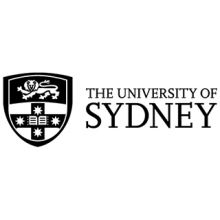Most foreign students from Australia’s biggest market are now studying remotely from their homeland, new figures suggest, as the pandemic’s transformation of international education passes another milestone.
Fifty-one per cent of Chinese people enrolled with Australian education providers are located outside Australia, up from 39 per cent in May, according to figures sourced from the Department of Home Affairs.
The data reflect months of departures without compensating arrivals; a one-way border regime saw the number of international students in Australia plummet by about 84,000, or one-sixth. But their loss was partially offset by a surge in offshore students, whose numbers swelled by more than 15,000.
This increase was attributable largely, if not entirely, to Chinese university students. While just 15 per cent of international higher education students from other countries are located offshore, the figure for China is 56 per cent.
Experts say this reflects the growing acceptance of online education among the Chinese, coupled with their regard for Australia’s handling of the pandemic. Phil Honeywood, chief executive of the International Education Association of Australia, said Australia could expect a “health dividend” from its success in containing the virus.
He said the boost in offshore numbers was likely to be fuelled both by existing students continuing their courses from home, and new students signing up with the expectation of eventually being allowed to travel. “They hang in there until they can come to a Covid-free country like Australia.”
Marketing consultant Dirk Mulder said many universities had been surprised at the uptake of offshore enrolments, which had been helped along by Chinese authorities temporarily lifting restrictions on the recognition of qualifications obtained through online study.
But if Beijing reverses that approach “we are in a lot of trouble”, warned Mr Mulder, a former international director at Murdoch University. He said students’ patience was another risk factor.
“I get the sense that they’re holding on and hoping. Australia is well placed as a nice safe destination. But if Canada can improve its healthcare outcomes it’s going to be in a very strong competitive position if we can’t start bringing students back in a scalable way. Australia is really desirable, but the question is, for how long?”
For now, the unexpected offshore enrolments have given some institutions a financial boost. The University of Sydney revised its 2020 student revenue estimate to just A$98 million (£54 million) below its pre-pandemic prediction – down from a forecasted A$470 million downturn in April, subsequently lowered to A$184 million – thanks to a second semester student surge.
Vice-chancellor Michael Spence told staff that Sydney’s international enrolments were now just 3.6 per cent below pre-Covid expectations, while domestic enrolments were 2.4 per cent higher. But he stressed that the pandemic’s impact on international enrolments for 2021 remained “difficult to predict”.
Meanwhile, Chinese people’s increasing willingness to study online from their own country suggests many may think twice about heading back overseas when travel restrictions eventually lift. But Mr Honeywood predicted a “massive appetite” for study abroad.
“Never underestimate the desire for young people to get away from Mum and Dad,” he said. “To live in a new country, practise English, experience a multicultural open society – that will continue to drive enrolments in countries like Australia.”
Register to continue
Why register?
- Registration is free and only takes a moment
- Once registered, you can read 3 articles a month
- Sign up for our newsletter
Subscribe
Or subscribe for unlimited access to:
- Unlimited access to news, views, insights & reviews
- Digital editions
- Digital access to THE’s university and college rankings analysis
Already registered or a current subscriber? Login










